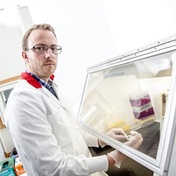Specialised adult stem cells are make it possible for mammals to re-grow the tips of injured fingers or toes, rather than a "jack of all trades" cell type formed in response to serious injury, a new study shows.
Researchers from Stanford University found the regenerating stem cells are tissue-specific, meaning each has a particular job regenerating bone, skin, tendon, vessels or nerves.
The findings call into question a popular theory that damaged extremities are regenerated by a bump of cells considered "pluripotent," meaning that they are able to grow into a variety of cell types. This versatile bump of repair cells is called a blastema, but it appears to have nothing to do with fingertip regeneration.
"We've shown conclusively that what was thought to be a blastema is instead simply resident stem cells that are already committed to become specific tissue types," said Dr Irving Weissman, director of Stanford's Institute for Stem Cell Biology and Regenerative Medicine. "The controversy about limb regeneration in mammals should be over."
What the findings mean
Mice and some humans have the ability to re-grow the tips of injured fingers or toes. To better understand how they do this, Stanford researchers labelled specific tissue types of mice with fluorescent colours before cutting off a small part of the mice's toes. Over the course of three months, they examined the regenerated tissue.
The researchers found that each tissue type - such as that found in nail, bone, tendon or blood vessels - could only give rise to that type of tissue, Weissman said. "There was no cross-contribution between tissue types or germ layers," he said.
"I was extremely surprised," confessed first author Yuval Rinkevich. "I began the experiment very eager to find something like... one tissue type becoming another. But this is clearly not the case."
He and the other researchers noted, however, the findings could help develop ways to enhance regeneration in humans.
"Here we are characterising and learning about a naturally occurring regeneration phenomenon without adding other genes," said Rinkevich. "We want to first understand how normal tissue regeneration works. Then we can try to exploit that knowledge to perhaps enhance the growth of digits or limbs in humans."
The researchers pointed out they also dismissed the alternate theory that stem cells circulating in the blood could play a role in this type of regeneration.
The study, published in the issue of Nature, did not discredit previous studies showing that it is possible to persuade specialised adult cells to turn into cells very similar to embryonic skin cells.
More information
The National Institutes of Health provides more information on stem cell research.
(Copyright © 2010 HealthDay. All rights reserved.)




 Publications
Publications
 Partners
Partners















